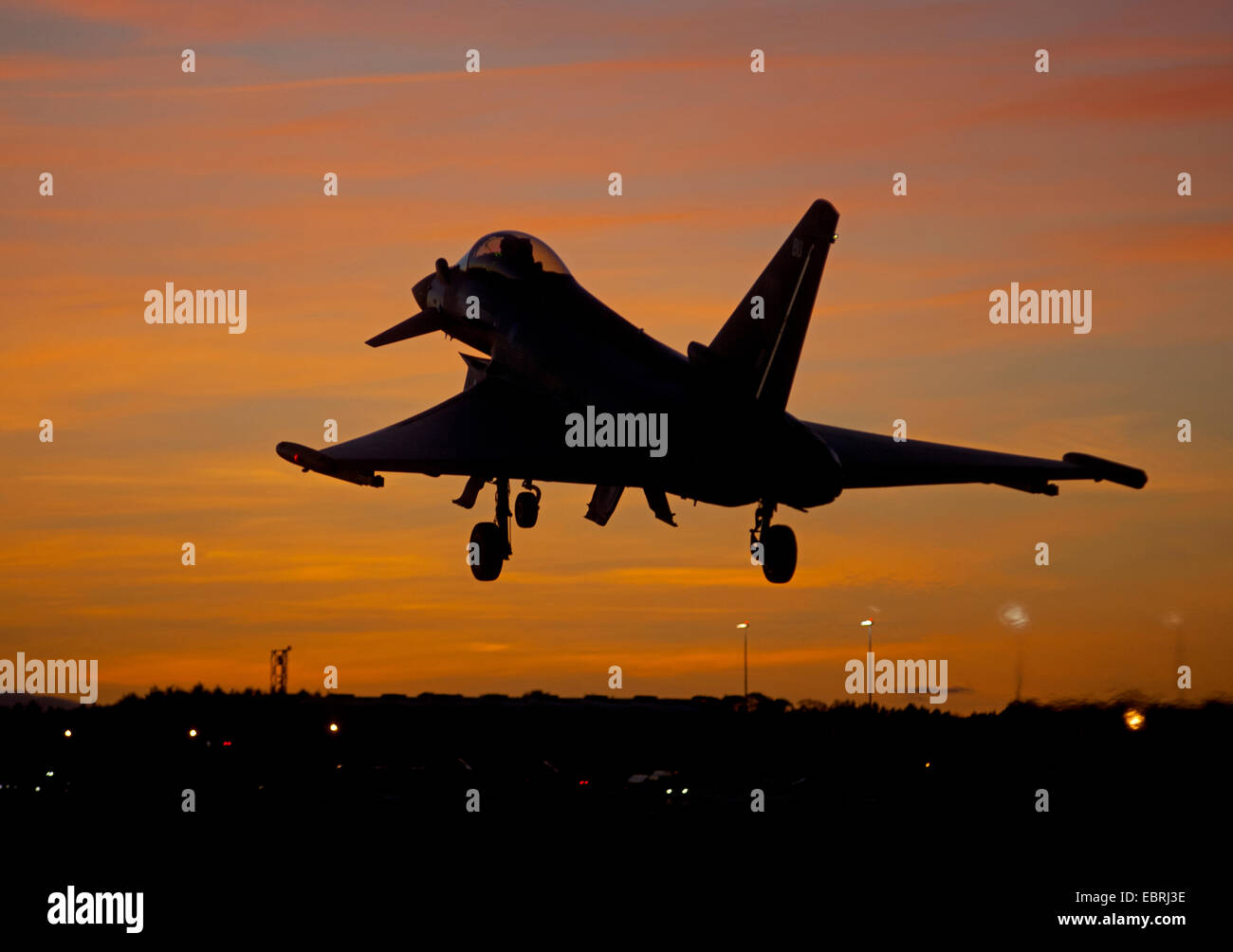Eurofighter Tyhoon FRG4 Returning at dusk to its home base at RAF Lossiemouth, Morayshire. SCO 9285.

Image details
Contributor:
David Gowans / Alamy Stock PhotoImage ID:
EBRJ3EFile size:
70 MB (1.1 MB Compressed download)Releases:
Model - no | Property - noDo I need a release?Dimensions:
5899 x 4148 px | 49.9 x 35.1 cm | 19.7 x 13.8 inches | 300dpiDate taken:
2 December 2014Location:
RAF Lossiemouth, Moray. Grampian Region. Scotland. UK.More information:
The UK agreed to approve production of "Tranche 2" in December 2004, this tranche will see the RAF receive a further 89 aircraft, bringing its Typhoon inventory to 144. This followed protracted negotiations regarding the early introduction of ground attack capabilities of the aircraft and hence its swing-role capability. While this was always planned it was intended to come at a much later date. In 2001, it was announced that the Royal Air Force (RAF) would not use the aircraft's internal 27 mm Mauser cannon. This was due to a desire to save money by removing gun support costs, ammunition stocks, training costs, etc. The gun was also deemed unnecessary since the missile armament was believed to be adequate in the Typhoon's fighter role. However, because removal of the cannon would affect the aircraft's flight characteristics, requiring modification of the aircraft's flight software the RAF decided that all of its Typhoons would be fitted with the cannon but that it would not be used or supported. The service argued that this would save money by reducing the requirement for ground equipment, removing training costs and avoiding the fatigue effects of firing the cannon. The RAF maintained the option to activate the cannons at very short notice were operational requirements to change. However in a third change of policy, the Daily Telegraph reported on 3 October 2006 that the RAF will fully utilise the cannon.